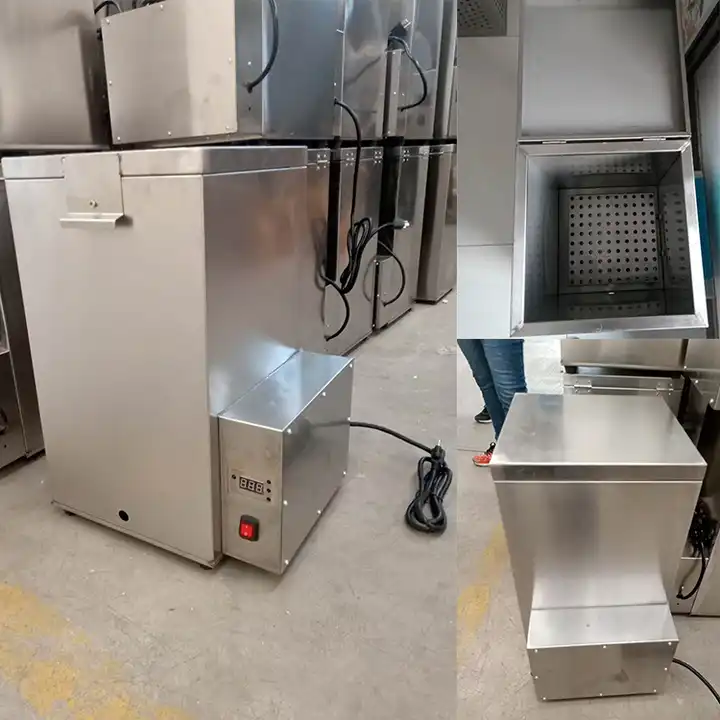fish feed pelleting machine
Dec . 21, 2024 20:41 Back to list
fish feed pelleting machine
The Importance of Fish Feed Pelleting Machines in Aquaculture
The aquaculture industry has seen exponential growth in recent years, and with this growth comes the increased demand for efficient and high-quality fish feed. Fish feed pelleting machines have become an essential component of this industry, transforming raw ingredients into high-nutrient pellets that meet the dietary needs of various fish species. This article will explore the significance of fish feed pelleting machines, their operation, and the benefits they bring to aquaculture.
Understanding Fish Feed Pelleting Machines
Fish feed pelleting machines are specialized devices designed to process feed ingredients by grinding, mixing, and pelleting them into uniform pellets. The general process involves several stages pre-conditioning, pelletizing, cooling, and packaging. During pre-conditioning, raw materials are mixed with water and steam to create a dough-like consistency. This step is crucial as it aids in the gelatinization of starches and improves the overall nutrient absorption in fish.
Next, the conditioned feed is forced through a die under high pressure and temperature, during which it is shaped into pellets of various sizes and textures, depending on the target fish species. After pelleting, the feed is cooled to remove excess moisture and then packaged for distribution. These machines can vary in size, from small units for local producers to large-scale industrial systems capable of processing tons of feed per hour.
Benefits of Fish Feed Pelleting Machines
1. Nutritional Value and Digestibility One of the primary advantages of using pelleted feed is the enhanced nutritional value. The high temperatures and pressure involved in the pelleting process help to eliminate harmful bacteria and pathogens, making the feed safer for fish consumption. Additionally, the uniform pellet size ensures that all fish receive a consistent diet, improving overall growth rates and health.
fish feed pelleting machine

2. Reduced Feed Wastage Pelleted feed minimizes wastage compared to traditional feed forms like flour or meal. The compact nature of pellets makes them less likely to disintegrate in water, ensuring that more feed reaches the fish rather than settling at the bottom of the tank. This efficiency not only maximizes feeding effectiveness but also helps in maintaining water quality by reducing uneaten feed particles.
3. Improved Feed Management Fish feed pelleting machines allow for better management of feed. Manufacturers can customize formulations to meet the exact needs of different fish species or growth stages, thus optimizing feeding strategies. This tailored approach contributes to better feed conversion ratios (FCR), meaning fish gain more weight for less feed.
4. Cost-Effectiveness While the initial investment in a pelleting machine can be significant, the long-term savings in feed efficiency, reduced waste, and improved fish growth make it a cost-effective solution for aquaculture operations. As fish production scales, the returns on investment become increasingly apparent, enabling businesses to thrive in a competitive market.
5. Sustainability As global populations rise and fish consumption increases, sustainable fish farming practices are critical. Pelleted feeds can be formulated to include alternative protein sources, reducing reliance on fishmeal derived from overexploited marine resources. This shift not only helps to protect marine ecosystems but also promotes responsible aquaculture practices.
Conclusion
In an ever-evolving aquaculture landscape, fish feed pelleting machines play a pivotal role in enhancing feed quality and efficiency. Their ability to create nutritious, digestible, and sustainable feed contributes not only to the health and growth of fish but also to the overall sustainability of the industry. As technology advances and the demand for fish continues to rise, the importance of sophisticated feed processing equipment will only grow, establishing them as indispensable assets in modern aquaculture. Investing in fish feed pelleting machines is not just a smart business decision; it is a step towards a more sustainable and productive aquaculture future.
-
Hot Sale 24 & 18 Door Rabbit Cages - Premium Breeding Solutions
NewsJul.25,2025
-
Automatic Feeding Line System Pan Feeder Nipple Drinker - Anping County Yize Metal Products Co., Ltd.
NewsJul.21,2025
-
Automatic Feeding Line System Pan Feeder Nipple Drinker - Anping County Yize Metal Products Co., Ltd.
NewsJul.21,2025
-
Automatic Feeding Line System - Anping Yize | Precision & Nipple
NewsJul.21,2025
-
Automatic Feeding Line System - Anping Yize | Precision & Nipple
NewsJul.21,2025
-
Automatic Feeding Line System-Anping County Yize Metal Products Co., Ltd.|Efficient Feed Distribution&Customized Animal Farming Solutions
NewsJul.21,2025






